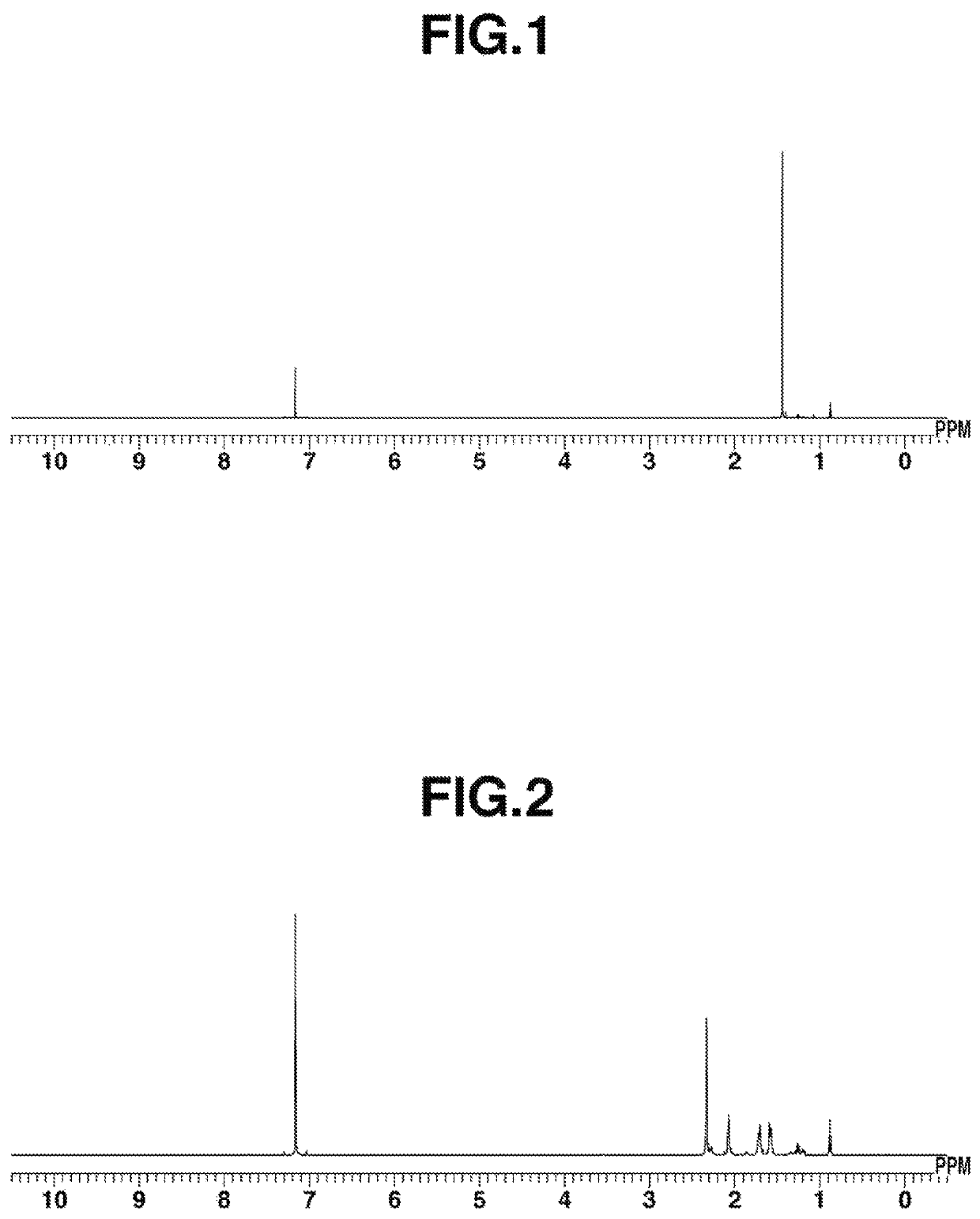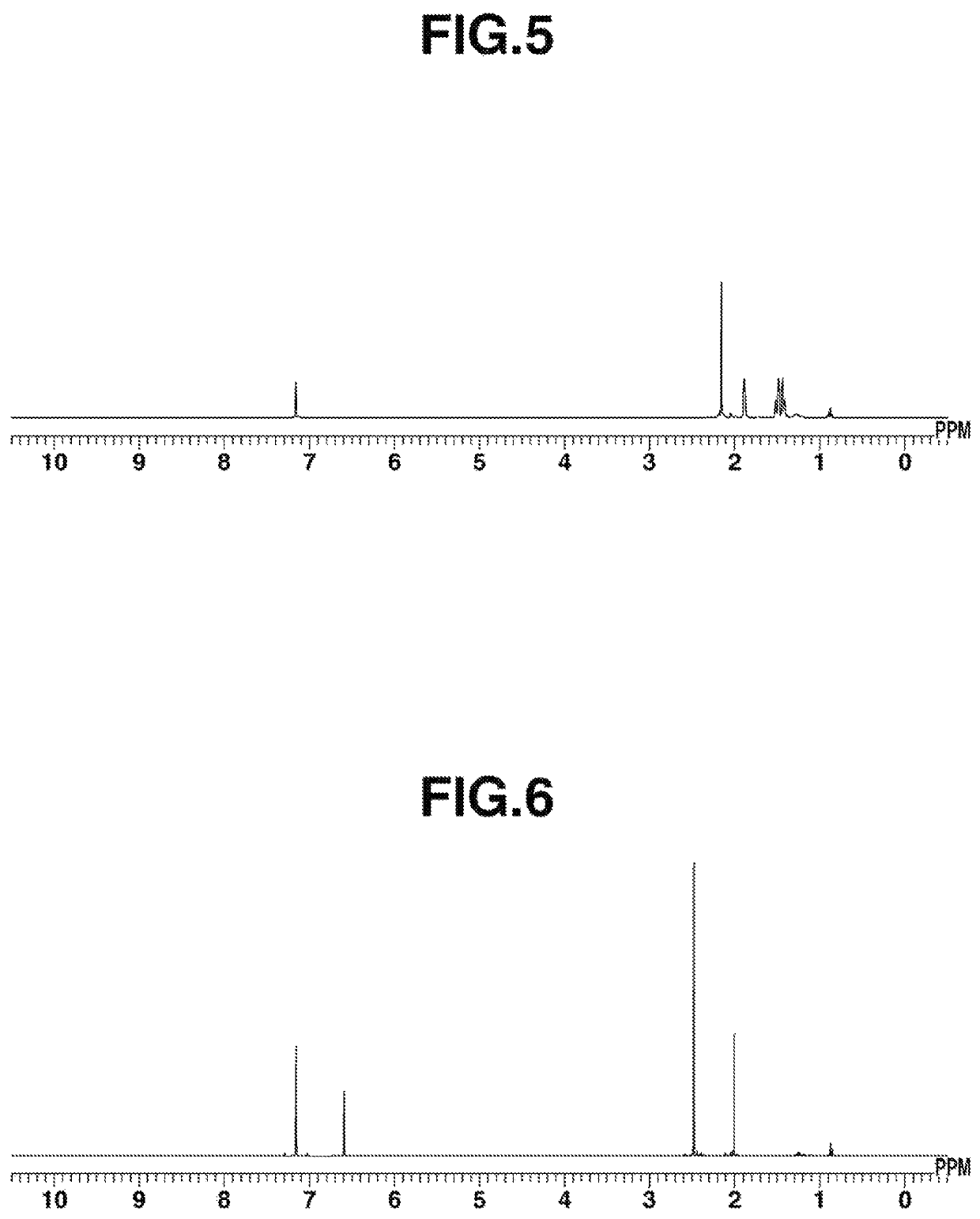Method for producing transition metal-isocyanide complex
a technology of isocyanide complex and transition metal, which is applied in the field of producing transition metal isocyanide complex, can solve the problems of difficult to create such a state, unstable precursor to air or water, and insufficient catalytic activity of samples, so as to achieve easy and efficient method, reduce risk during the production of transition metal complex, and reduce the effect of catalyst activity
- Summary
- Abstract
- Description
- Claims
- Application Information
AI Technical Summary
Benefits of technology
Problems solved by technology
Method used
Image
Examples
example 1
[Example 1] Synthesis of Cobalt Isocyanide Complex Co2(CNtBU)8 Using Cobalt Iodide and KC8
[0143]Cobalt iodide (0.31 g, 1.0 mmol), tetrahydrofuran (hereinafter, abbreviated as THF) (15 mL), t-butyl isocyanide (0.33 g, 4.0 mmol), and KC8 (manufactured by Strem Chemicals, Inc., 0.27 g, 2.0 mmol) were added in this order to a reactor, and stirring was performed at 25° C. for 12 hours. After that, the reaction solution was subjected to celite filtration, and the solvent of the filtrate was distilled under reduced pressure. The resulting dried substance was dissolved in pentane (approximately 40 mL), and the insoluble matter was removed by celite filtration. The filtrate was cooled to −35° C. to perform recrystallization; thus, Co2(CNtBu)8 was obtained (0.24 g, yield: 61%). 1H-NMR spectrum of the resulting complex is shown in FIG. 1.[0144]1H-NMR (600 MHz, C6D6) δ: 1.44 (s, 72H).[0145]IR (ATR): ν=1666 (CN (bridge)), 2093, 1977, 1942 (CN (terminal)) cm31 1 [0146]Anal. Calcd. for C40H72N8Co...
example 2
[Example 2] Synthesis of Cobalt Isocyanide Complex Co2(CNtBu)8 Using Cobalt Bromide and KC8
[0148]Cobalt bromide (22 mg, 0.10 mmol), THF (3 mL), t-butyl isocyanide (33 mg, 0.40 mmol), and KC8 (manufactured by Strem Chemicals, Inc., 27 mg, 0.20 mmol) were added in this order to a reactor, and stirring was performed at 25° C. for 12 hours. After that, the reaction solution was subjected to celite filtration, and the solvent of the filtrate was distilled under reduced pressure. The resulting dried substance was dissolved in pentane (approximately 4 mL), and the insoluble matter was removed by celite filtration. The filtrate was cooled to −35° C. to perform recrystallization; thus, Co2(CNtBu)8 was obtained (27 mg, yield: 70%).
example 3
[Example 3] Synthesis of Cobalt Isocyanide Complex Co2(CNtBu)8 Using Cobalt Chloride and KC8
[0149]Cobalt chloride (13 mg, 0.10 mmol), THF (3 mL), t-butyl isocyanide (33 mg, 0.40 mmol), and KC8 (27 mg, 0.20 mmol) were added in this order to a reactor, and stirring was performed at 25° C. for 12 hours. After that, the reaction solution was subjected to celite filtration, and the solvent of the filtrate was distilled under reduced pressure. The resulting dried substance was dissolved in pentane (approximately 4 mL), and the insoluble matter was removed by celite filtration. The filtrate was cooled to −35° C. to perform recrystallization; thus, cobalt isocyanide complex Co2(CNtBu)8 was obtained (27 mg, yield: 70%).
PUM
| Property | Measurement | Unit |
|---|---|---|
| reaction temperature | aaaaa | aaaaa |
| reaction temperature | aaaaa | aaaaa |
| molar concentration | aaaaa | aaaaa |
Abstract
Description
Claims
Application Information
 Login to View More
Login to View More - R&D
- Intellectual Property
- Life Sciences
- Materials
- Tech Scout
- Unparalleled Data Quality
- Higher Quality Content
- 60% Fewer Hallucinations
Browse by: Latest US Patents, China's latest patents, Technical Efficacy Thesaurus, Application Domain, Technology Topic, Popular Technical Reports.
© 2025 PatSnap. All rights reserved.Legal|Privacy policy|Modern Slavery Act Transparency Statement|Sitemap|About US| Contact US: help@patsnap.com



